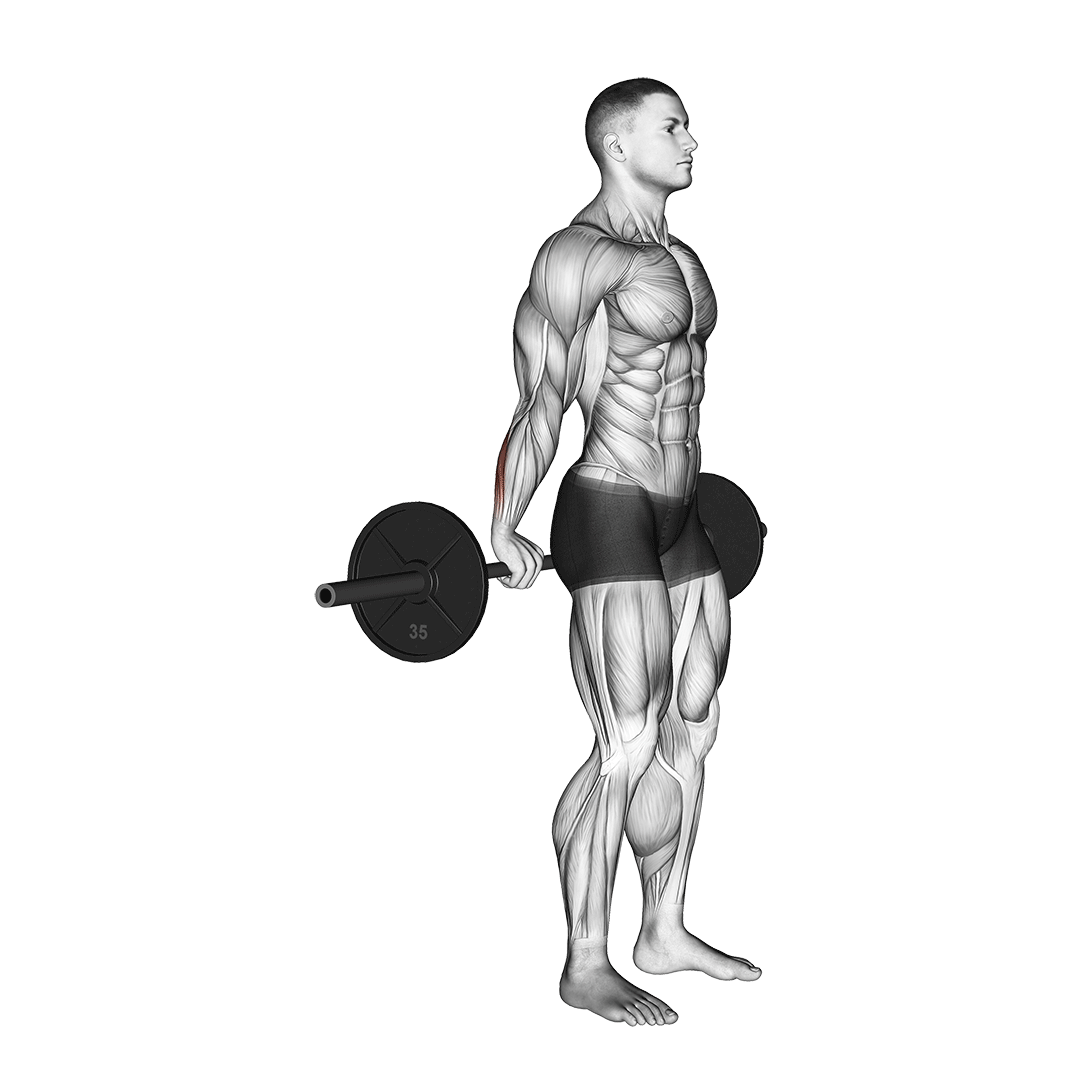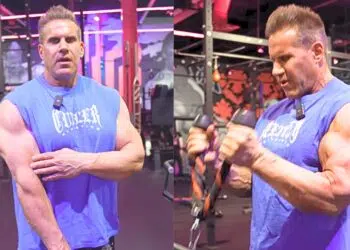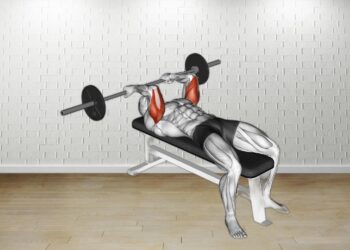Strengthening your forearms is essential for enhancing grip strength and performance in various activities. The Barbell Standing Behind-the-Back Wrist Curls specifically targets the forearm extensor muscles, which are crucial for daily tasks like carrying groceries and sports such as rock climbing and weightlifting. By integrating this exercise into your routine, you’ll not only build muscle but also enhance your functional strength, benefiting multiple areas of your life.
This exercise focuses on wrist extension, engaging the muscles along the top of your forearms to improve balance and control, which are vital for athletic performance and everyday movements. For optimal results, include the Barbell Standing Behind-the-Back Wrist Curls in your training regimen two to three times a week, allowing adequate recovery time between sessions to promote strength without strain.
Prioritize safety by starting with a manageable weight to avoid injury. Be mindful to keep your forearms steady, using only wrist movement. You can perform this exercise with a barbell, but it’s also adaptable with resistance bands or lighter dumbbells. This flexibility makes it accessible for all fitness levels. Grab your barbell and start building strong forearms to elevate your overall performance.
How to Do a Barbell Standing Back Wrist Curl

Start by standing with your feet shoulder-width apart, holding a barbell with an overhand grip (palms facing down). Your arms should be fully extended in front of you, resting on your thighs.
- With a slight bend in your elbows, curl the barbell upward by flexing your wrists, keeping your forearms stationary.
- Raise the barbell until your wrists are fully extended, feeling the contraction in your forearms.
- Pause for a moment at the top of the movement to maximize muscle engagement.
- Slowly lower the barbell back to the starting position, maintaining control throughout the descent.
Exhale as you curl the barbell up and inhale as you lower it back down.
Level Up Your Fitness: Join our 💪 strong community in Fitness Volt Newsletter. Get daily inspiration, expert-backed workouts, nutrition tips, the latest in strength sports, and the support you need to reach your goals. Subscribe for free!
Level Up Your Fitness: Join our 💪 strong community in Fitness Volt Newsletter. Get daily inspiration, expert-backed workouts, nutrition tips, the latest in strength sports, and the support you need to reach your goals. Subscribe for free!
Common Mistakes
- Using Too Much Weight: Choosing a weight that is too heavy can lead to poor form and increase the risk of injury. Start with a manageable weight to focus on technique and gradually increase as your strength improves.
- Not Keeping Forearms Stationary: Allowing your forearms to lift or move during the curl reduces the effectiveness of the exercise. Focus on isolating your wrist movement while keeping your forearms anchored on your thighs.
- Inadequate Range of Motion: Not fully extending or contracting your wrists limits muscle engagement. Make sure to complete the full motion by raising the barbell until your wrists are extended and lowering it back to the starting position.
- Using Momentum: Swinging the barbell instead of using your wrist muscles can lead to ineffective workouts. Perform the exercise in a slow and controlled manner to fully engage your forearm muscles.
- Neglecting Breathing Patterns: Holding your breath can lead to increased tension and reduce performance. Remember to exhale while curling the barbell up and inhale while lowering it again to maintain proper oxygen flow.
Benefits
- Enhanced Grip Strength: Improves overall grip strength which is vital for various sports and weightlifting activities.
- Forearm Development: Specifically targets the extensor muscles of the forearm, promoting balanced muscle growth.
- Injury Prevention: Strengthens the wrist joint and surrounding muscles, reducing the risk of injuries during other exercises.
- Improved Athletic Performance: Increases effectiveness in sports requiring wrist and forearm strength, such as rock climbing and tennis.
- Better Forearm Definition: Contributes to a well-defined forearm, enhancing the aesthetics of the arms.
Exercise Variations
Alternative Exercises
Safety Precautions
Before starting the Barbell Standing Back Wrist Curl, it is crucial to prepare adequately to minimize the risk of injury. Begin by warming up your wrists and forearms through dynamic stretching or light exercises such as wrist rolls and gentle flexion/extension motions. This will help increase blood flow to the muscles and joints involved in the exercise. Additionally, ensure that you select an appropriate weight for the exercise; starting with too heavy a load can compromise form and increase the likelihood of strain or injury. If you’re unsure, test the weight with a few lighter repetitions first to gauge your comfort and ability levels.
While executing the Barbell Standing Behind-the-Back Wrist Curls , maintaining proper form is imperative. Ensure that your feet are shoulder-width apart for a stable base, and avoid excessive bending of the elbows—keep them slightly bent but still stationary throughout the movement. As you curl the barbell upward, focus on using your wrists rather than swinging your arms or using momentum; this promotes greater engagement of the forearm muscles and reduces strain on the shoulders and back. Always keep your core tight to support your posture, and avoid arching your back during the exercise. Furthermore, exhale during the upward movement and inhale as you lower the weight back down; this breath pattern will help maintain control and focus throughout your sets.
This exercise may not be suitable for individuals with wrist injuries or conditions such as carpal tunnel syndrome, as it places additional strain on the wrists. If you experience any pain during the movement, it is best to stop immediately and consult with a fitness professional or healthcare provider. To modify the exercise for increased comfort, consider using a lighter barbell or opting for a wrist roller instead, which can provide a similar workout without the same level of wrist flexion required in the curl. Focusing on your limits and adjusting as needed will ensure not only the effectiveness of the workout but also your safety and overall well-being.
Interested in measuring your progress? Check out our strength standards for Wrist Curl.








